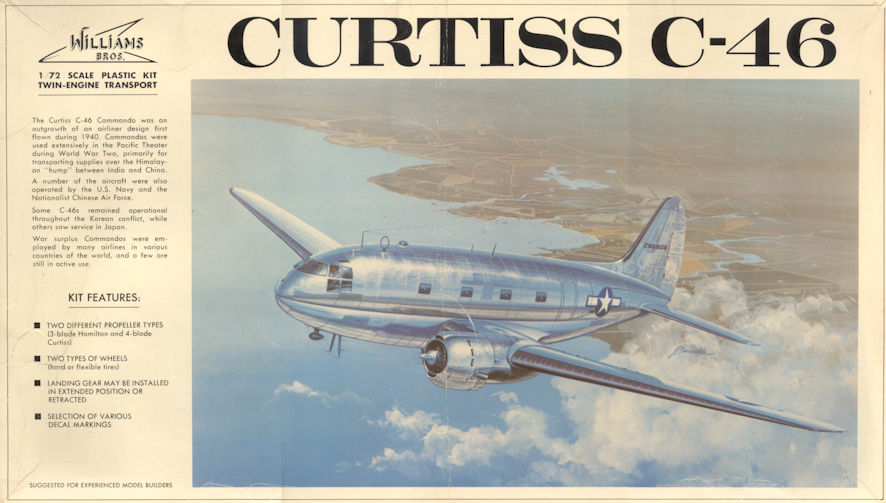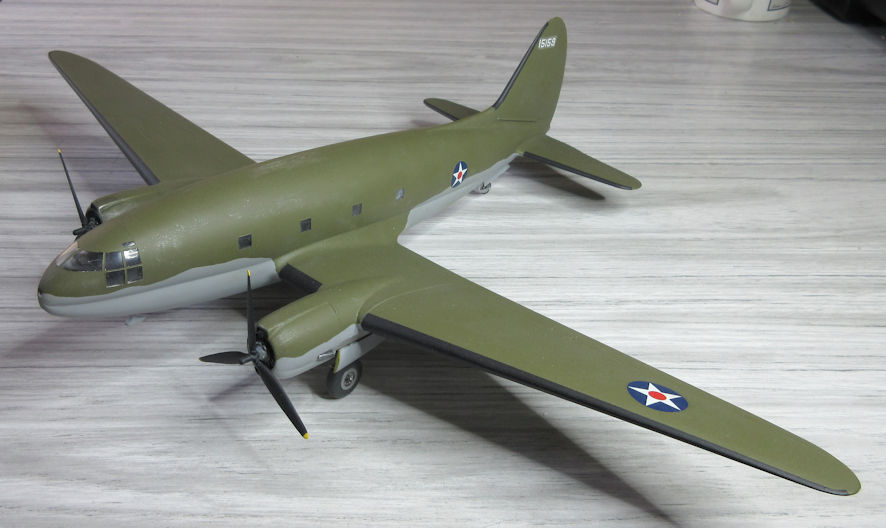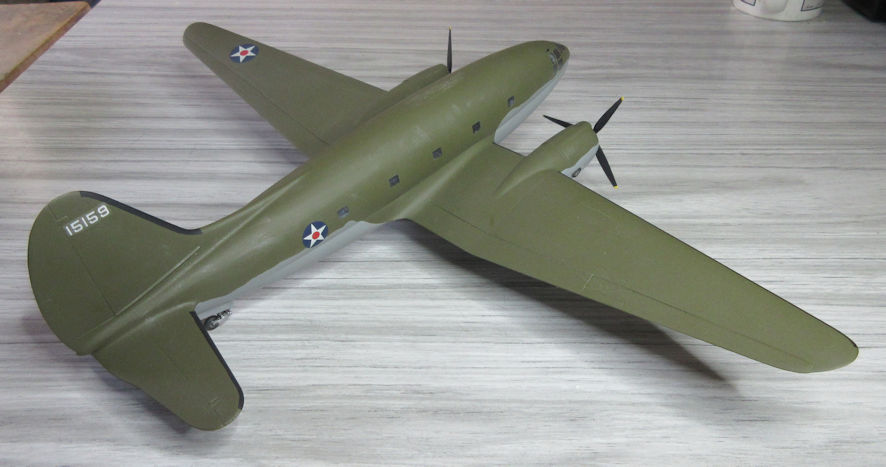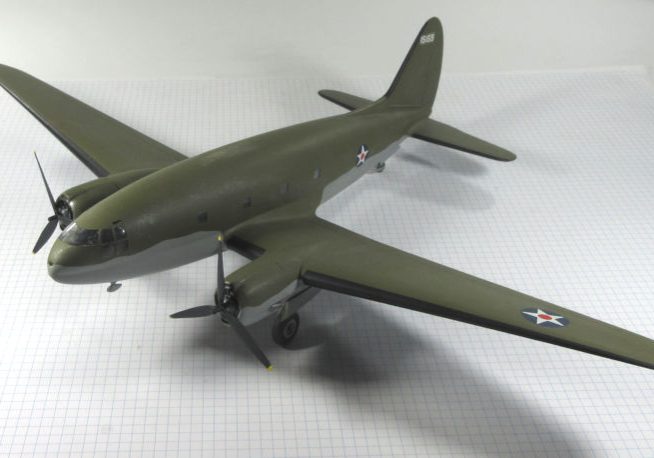Like its smaller compatriot the Douglas C-47, the C-46 began life as a passenger aeroplane, first flying in March 1940. It was, however, larger than the C-47 (or Douglas DC-3) with capacity to carry 36 passengers rather than 21. The large capacity fuselage soon attracted the attention of the United States military authorities for cargo, transport and casualty evacuation and it was ordered into production. The first C-46s entered service in July 1942 and were, at the time, the largest and heaviest two engines aeroplane in American service. They soon proved to be such a valuable transport in the Pacific theater that well over 3,000 were built.
Although several attempts were made to improve the type with, for example, a more traditional stepped cockpit windscreen, almost all C-46s were the same. The major differences between versions was that the later C-46A had a large cargo door installed on the port side of the rear fuselage, a strengthened cargo floor and folding seats for 40 troops.
The C-46 had a better high altitude performance than the C-47 which made it particularly valuable in flying vital supplies over the Himalayas from India to China after Japan occupied Burma and they made a vital contribution to success of this aspect of the war. C-46s were also significant in the United States island-hopping campaign in the Pacific and 160 were supplied to the US Marine Corps where they served as R5C-1s.
The C-46 remained in United States service at the end of World War Two and were employed operationally during the Korean War and in the early stages of the war in Vietnam. Their large cargo carrying capacity also made them popular with many post-war air freight companies and a few remained in service with small airlines and air forces well into the 1980s. They are now largely forgotten, shadowed by the smaller but almost ubiquitous C-47.

The thing that has always attracted me about the C-46 is the way it looks like a killer whale with wings, perhaps one of the most elegant cargo aeroplanes ever made. It’s almost a pity that the war intervened so it never appeared in some really good commercial liveries although the kit does offer one nice commercial scheme. In fact this kit offers a number of options with parts for the C-46 and the later C-46A (thought the instructions don’t say as much) and markings for four versions including two USAAF, one Chinese Nationalist and one Flying Tiger Line version.
This kits is similar to the limited run kits that are commonplace now and something of a modellers model because they expect the modeller to add various little bits and pieces that are scratch made, to cut open the undercarriage doors, remove stiffening ribs for the early version and square off the wing tips for a later version. None of this is very hard work.
In some ways this was an easy kit to build, in other ways it was a lot less than fun. On the positive side the mouldings are good, solid and well planned. For a kit that must be getting on for more than twenty years old it looks good and has some good work on the surface detailing. It goes together fairly well too but it is one of those kits where, if you take a little bit more time in checking to see that things line up and take a little bit off here and a tiny bit off there, things will go together very nicely.
There is one exception (and the reviews of the kit mention it so it can’t be my fault), the main lower wing assembly doesn’t line up very well with the fuselage and it takes a fair bit of putting on the glue, putting the pieces together and then shuffling them around while looking at the model from all angles to make sure everything looks good before it all sets solid. Then a liberal application of filler takes care of the remaining problems.
There are a couple of other construction problems. One is the cockpit canopy that comes in two halves and just doesn’t want to go together properly. I used clear five-minute clear epoxy glue to attach them to the model and held everything in just the right place while the glue set. Then I faired the canopy into the fuselage with filler, sanded it all back smooth and then polished it up with brasso.
The other blindingly obvious problem is the undercarriage where all four rear stays are made for the same side of the main leg and two have to be tampered with so they go on the other side. I also had trouble with the propellers – the kit gives you the hub and blades separately for three and four blade versions and getting everything to line up square is a struggle. The less said about this the better.
Right from the beginning I planned to make the earlier USAAF version, mainly because it avoided having to make the other version offered in the kit which are all bare metal. The early scheme is standard drab olive and neutral grey with just a hint of excitement with black de-icing boots and a touch of silver around the exhausts. The decals that come with the kit are very nice but the blue is too light for standard American roundels so I had to scrounge better ones from the spares box. In the end all I used from the very attractive decal sheet were two serial numbers.
The finished model is quite large so the big areas of gray and drab olive looked too bare. So I did a touch of weathering to break them up a bit The finished model looks quite elegant in its own portly way.


Leigh Edmonds
October 2001
